Results
-
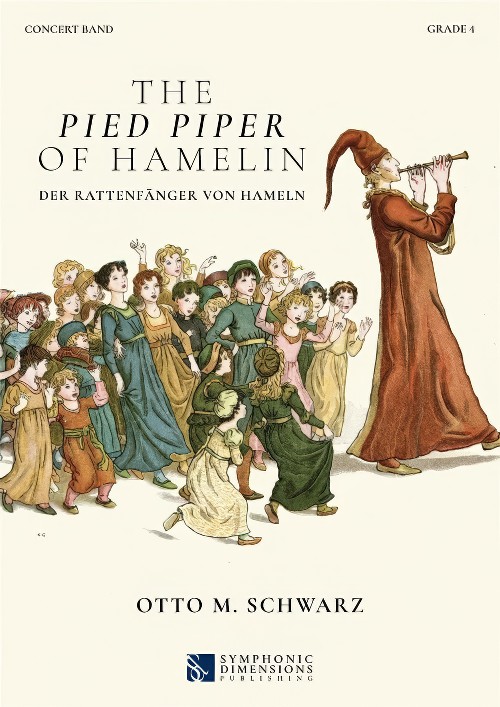 £163.99
£163.99The Pied Piper of Hamelin (Concert Band - Score and Parts) - Schwarz, Otto M.
Stories, sagas and legends--who among us don't know them? Always delivered with a tinge of brutality, these cautionary tales are a legacy of moral education from times past: inquisitive children alone in the forest are generally eaten by a witch; the 'Soup-Kasper' of Hoffmann's Struwwelpeter dies from starvation rather than eating his soup; anyone letting in strangers usually gets devoured; anyone who plays with matches gets burned; and thumb-suckers get their thumbs cut off. The list of unfortunate demises is almost endless.In the tale of The Pied Piper of Hamelin, parents lose their children through greed, ridicule, scorn and a failure to appreciate art. There is still a street in the town of Hamelin in which neither drumming nor playing has not been allowed since 130 children disappeared into a mountain, never to be seen again. This composition by Otto M. Schwarz opens with exactly this scene, taking us back to the year 1284. As in many towns at the time, Hamelin in Germany suffered with hygiene problems--rats and mice began to multiply rapidly, and the town was overrun with the plague. There appeared a man dressed in colourful clothes who promised the locals to free them from this burden. They agreed and settled on a fee. Then the man pulled out a pipe and began to play. When the rats and mice heard this, they followed him. He led the animals into the Weser River, where they all drowned. Back in town, the people refused to pay him. They didn't recognise this man's skills and knowledge and were only prepared to pay for simple labour. A pact with the devil was made, which led to the Pied Piper leaving the town in a furious rage. One Sunday, when many people were at church, he returned, took out his flute and began to play. The town's children were so enchanted by his playing that they followed him. He led them out of the town and disappeared with them forever into a mountain forever. Of all the children, only two survived--however one was mute, and one was blind. In the street from which the children left Hamelin, music may no longer be played in memory of this event. The work may be performed in two different versions: 1. Purely instrumental (without narrator)--the GPs (pauses) must be kept short 2. With narrator--he speaks in the GPs but not during the music.Duration: 14.15
Estimated dispatch 7-14 working days
-
 £75.00
£75.00The Wand of Youth, Suite No.2, March (Concert Band - Score and Parts) - Elgar, Edward - Noble, Paul
The Wand of Youth suites were written in 1869 when Elgar was only twelve years old, music written for a play and acted by the Elgar children for a private family theatrical production. He noted the tunes down in a sketchbook and in 1907, forty years later, he rearranged with only minor changes and orchestrated them as the two suites titled The Wand of Youth, Suite Nos. 1 and 2. Although the Wand of Youth Suites date from Elgar's mature years, he insisted on calling it Opus 1, because he wrote these pieces originally for piano many years earlier. The March is the first movement of The Wand of Youth, Suite No. 2. The arranger has presented this movement as an example of an excellent concert opener or warm-up march for a festival or contest performance because of its delicacy, yet determination.
Estimated dispatch 7-14 working days
-
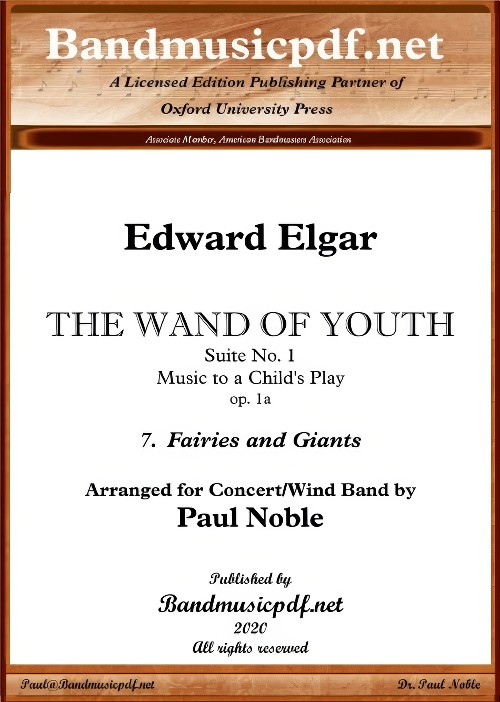 £50.00
£50.00The Wand of Youth, Suite No.1 - VII. Fairies and Giants (Concert Band - Score and Parts) - Elgar, Edward - Noble, Paul
The Wand of Youth suites, subtitled Music to a Child's Play, were written in 1869 when Elgar was only twelve years old, music written for a play and acted by the Elgar children for a private family theatrical production. He noted the tunes down in a sketchbook and in 1907, forty years later, he rearranged with only minor changes and orchestrated them as the two suites titled The Wand of Youth, Suite Nos. 1 and 2. Although The Wand of Youth suites date from Elgar's mature years, he insisted on calling it Opus 1, because he wrote these pieces originally for piano many years earlier.
Estimated dispatch 7-14 working days
-
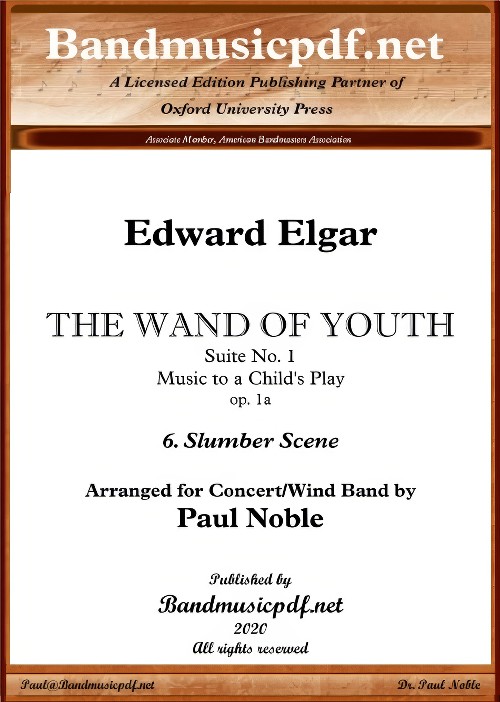 £40.00
£40.00The Wand of Youth, Suite No.1 - VI. Slumber Scene (Concert Band - Score and Parts) - Elgar, Edward - Noble, Paul
The Wand of Youth suites, subtitled Music to a Child's Play, were written in 1869 when Elgar was only twelve years old, music written for a play and acted by the Elgar children for a private family theatrical production. He noted the tunes down in a sketchbook and in 1907, forty years later, he rearranged with only minor changes and orchestrated them as the two suites titled The Wand of Youth, Suite Nos. 1 and 2. Although The Wand of Youth suites date from Elgar's mature years, he insisted on calling it Opus 1, because he wrote these pieces originally for piano many years earlier.
Estimated dispatch 7-14 working days
-
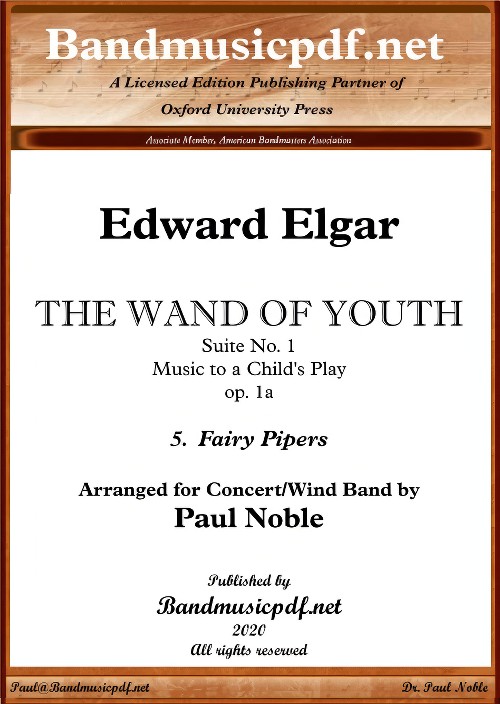 £40.00
£40.00The Wand of Youth, Suite No.1 - V. Fairy Pipers (Concert Band - Score and Parts) - Elgar, Edward - Noble, Paul
The Wand of Youth suites, subtitled Music to a Child's Play, were written in 1869 when Elgar was only twelve years old, music written for a play and acted by the Elgar children for a private family theatrical production. He noted the tunes down in a sketchbook and in 1907, forty years later, he rearranged with only minor changes and orchestrated them as the two suites titled The Wand of Youth, Suite Nos. 1 and 2. Although The Wand of Youth suites date from Elgar's mature years, he insisted on calling it Opus 1, because he wrote these pieces originally for piano many years earlier.
Estimated dispatch 7-14 working days
-
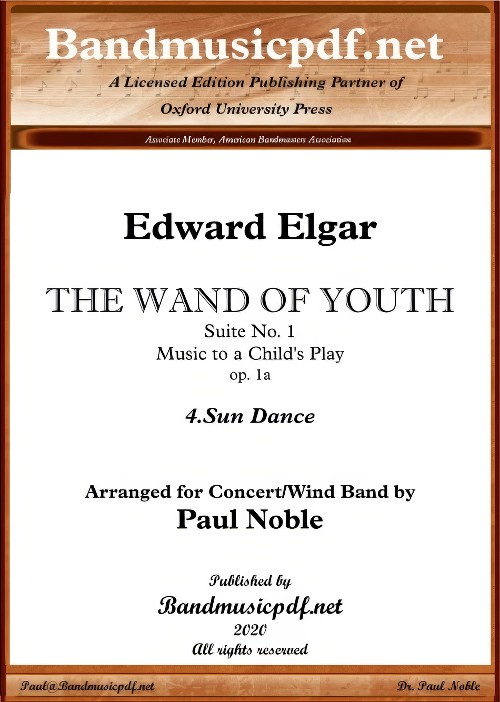 £50.00
£50.00The Wand of Youth, Suite No.1 - IV. Sun Dance (Concert Band - Score and Parts) - Elgar, Edward - Noble, Paul
The Wand of Youth suites, subtitled Music to a Child's Play, were written in 1869 when Elgar was only twelve years old, music written for a play and acted by the Elgar children for a private family theatrical production. He noted the tunes down in a sketchbook and in 1907, forty years later, he rearranged with only minor changes and orchestrated them as the two suites titled The Wand of Youth, Suite Nos. 1 and 2. Although The Wand of Youth suites date from Elgar's mature years, he insisted on calling it Opus 1, because he wrote these pieces originally for piano many years earlier.
Estimated dispatch 7-14 working days
-
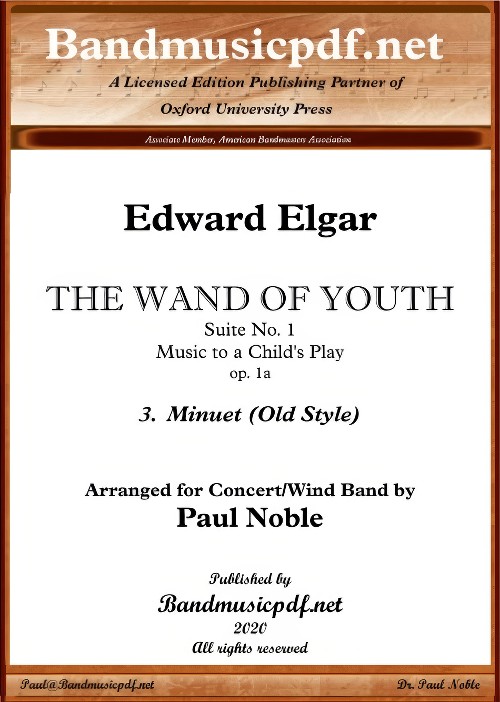 £40.00
£40.00The Wand of Youth, Suite No.1 - III. Minuet (Old Style) (Concert Band - Score and Parts) - Elgar, Edward - Noble, Paul
The Wand of Youth suites, subtitled Music to a Child's Play, were written in 1869 when Elgar was only twelve years old, music written for a play and acted by the Elgar children for a private family theatrical production. He noted the tunes down in a sketchbook and in 1907, forty years later, he rearranged with only minor changes and orchestrated them as the two suites titled The Wand of Youth, Suite Nos. 1 and 2. Although The Wand of Youth suites date from Elgar's mature years, he insisted on calling it Opus 1, because he wrote these pieces originally for piano many years earlier.
Estimated dispatch 7-14 working days
-
 £40.00
£40.00The Wand of Youth, Suite No.1 - II. Serenade (Concert Band - Score and Parts) - Elgar, Edward - Noble, Paul
The Wand of Youth suites, subtitled Music to a Child's Play, were written in 1869 when Elgar was only twelve years old, music written for a play and acted by the Elgar children for a private family theatrical production. He noted the tunes down in a sketchbook and in 1907, forty years later, he rearranged with only minor changes and orchestrated them as the two suites titled The Wand of Youth, Suite Nos. 1 and 2. Although The Wand of Youth suites date from Elgar's mature years, he insisted on calling it Opus 1, because he wrote these pieces originally for piano many years earlier.
Estimated dispatch 7-14 working days
-
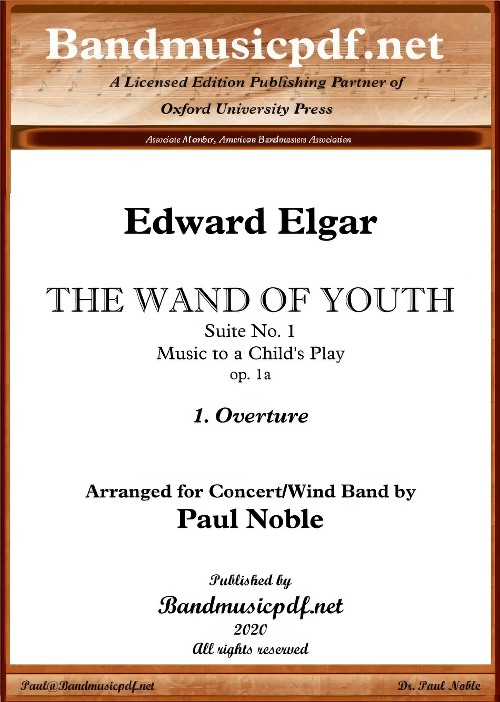 £50.00
£50.00The Wand of Youth, Suite No.1 - I. Overture (Concert Band - Score and Parts) - Elgar, Edward - Noble, Paul
The Wand of Youth suites, subtitled Music to a Child's Play, were written in 1869 when Elgar was only twelve years old, music written for a play and acted by the Elgar children for a private family theatrical production. He noted the tunes down in a sketchbook and in 1907, forty years later, he rearranged with only minor changes and orchestrated them as the two suites titled The Wand of Youth, Suite Nos. 1 and 2. Although The Wand of Youth suites date from Elgar's mature years, he insisted on calling it Opus 1, because he wrote these pieces originally for piano many years earlier.
Estimated dispatch 7-14 working days
-
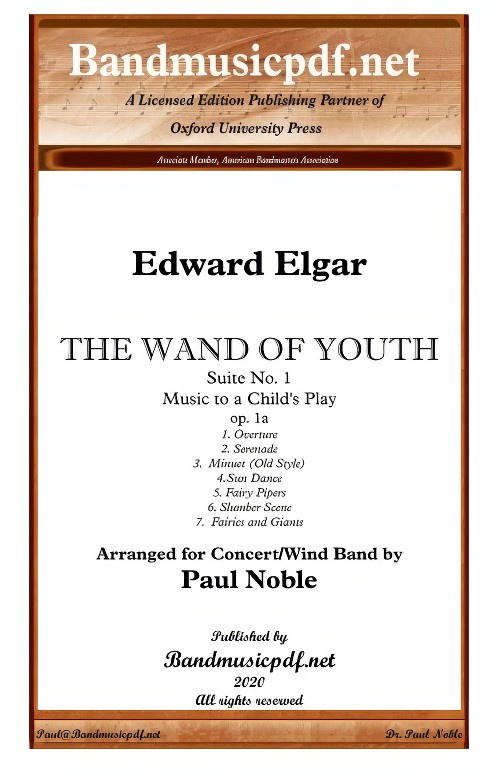 £225.00
£225.00The Wand of Youth, Suite No.1 (Complete) (Concert Band - Score and Parts) - Elgar, Edward - Noble, Paul
The Wand of Youth suites, subtitled Music to a Child's Play, were written in 1869 when Elgar was only twelve years old, music written for a play and acted by the Elgar children for a private family theatrical production. He noted the tunes down in a sketchbook and in 1907, forty years later, he rearranged with only minor changes and orchestrated them as the two suites titled The Wand of Youth, Suite Nos. 1 and 2. Although The Wand of Youth suites date from Elgar's mature years, he insisted on calling it Opus 1, because he wrote these pieces originally for piano many years earlier. Suite No.1 includes seven movements: 1. Overture; 2. Serenade; 3. Minuet (Old Style); 4. Sun Dance; 5. Fairy Pipers; 6. Slumber Scene; and 7. Fairies and Giants.
Estimated dispatch 7-14 working days
